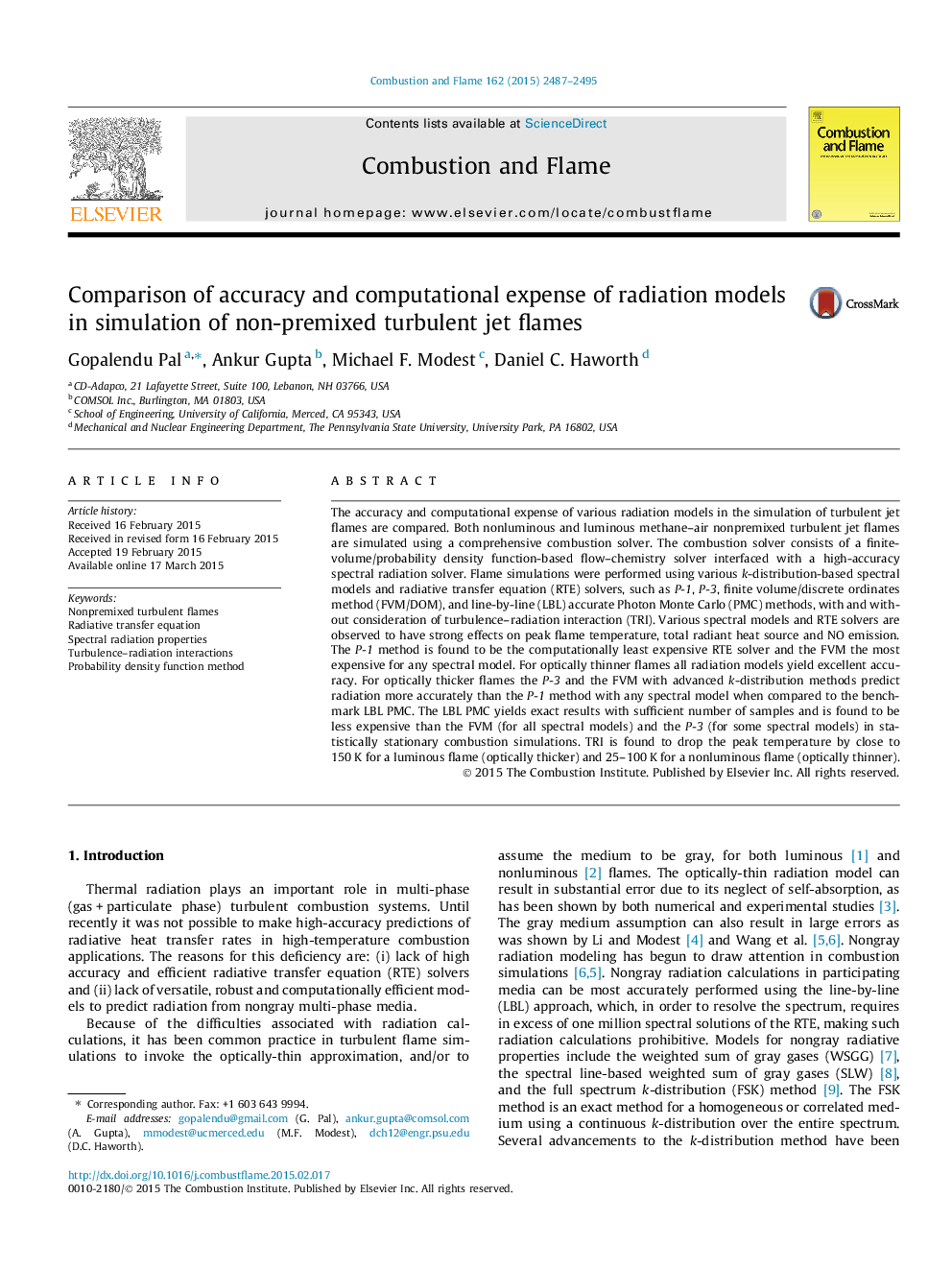| کد مقاله | کد نشریه | سال انتشار | مقاله انگلیسی | نسخه تمام متن |
|---|---|---|---|---|
| 166281 | 457751 | 2015 | 9 صفحه PDF | دانلود رایگان |
The accuracy and computational expense of various radiation models in the simulation of turbulent jet flames are compared. Both nonluminous and luminous methane–air nonpremixed turbulent jet flames are simulated using a comprehensive combustion solver. The combustion solver consists of a finite-volume/probability density function-based flow–chemistry solver interfaced with a high-accuracy spectral radiation solver. Flame simulations were performed using various k-distribution-based spectral models and radiative transfer equation (RTE) solvers, such as P-1, P-3, finite volume/discrete ordinates method (FVM/DOM), and line-by-line (LBL) accurate Photon Monte Carlo (PMC) methods, with and without consideration of turbulence–radiation interaction (TRI). Various spectral models and RTE solvers are observed to have strong effects on peak flame temperature, total radiant heat source and NO emission. The P-1 method is found to be the computationally least expensive RTE solver and the FVM the most expensive for any spectral model. For optically thinner flames all radiation models yield excellent accuracy. For optically thicker flames the P-3 and the FVM with advanced k-distribution methods predict radiation more accurately than the P-1 method with any spectral model when compared to the benchmark LBL PMC. The LBL PMC yields exact results with sufficient number of samples and is found to be less expensive than the FVM (for all spectral models) and the P-3 (for some spectral models) in statistically stationary combustion simulations. TRI is found to drop the peak temperature by close to 150 K for a luminous flame (optically thicker) and 25–100 K for a nonluminous flame (optically thinner).
Journal: Combustion and Flame - Volume 162, Issue 6, June 2015, Pages 2487–2495
